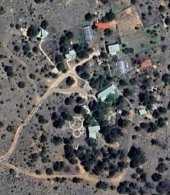
 5
5




sow…reap…compost…repeat
 1
1






 1
1




sow…reap…compost…repeat




Moderator, Treatment Free Beekeepers group on Facebook.
https://www.facebook.com/groups/treatmentfreebeekeepers/





 1
1




sow…reap…compost…repeat
 5
5




Groundwater recharge happens when a part of precipitation on the ground surface infiltrates through the soil and reaches the water table.
2.4 Estimating the groundwater recharge is one of the most difficult measures regarding groundwater resources.
Invasive plants are Earth's way of insisting we notice her medicines. Stephen Herrod Buhner
Everyone learns what works by learning what doesn't work. Stephen Herrod Buhner
 1
1




Amy Gardener wrote:Thanks for the link Michael. I actually live on a "sand dam" system. Instead of gathering water by hand as in the video, locals here pump the water out of the sand-gravel reservoir. The neighbor (a corporation) about 3 miles from me pumps over 7 million gallons per day. As you can imagine, the effort of collecting water by hand and storing it in tanks seems really absurd when the community lacks a shared sense of responsibility to replenish the resource. The natural sand dam system here has a tremendous amount of water and some pump and others try to create a micro-strategy for replenishing an increasingly scarce resource. I would like to pump some water from the communal sand dam instead of moving buckets around. I'd like to prove, at least in a broad sense, that I put back what I take out.
Moderator, Treatment Free Beekeepers group on Facebook.
https://www.facebook.com/groups/treatmentfreebeekeepers/





 1
1




sow…reap…compost…repeat
 1
1




Moderator, Treatment Free Beekeepers group on Facebook.
https://www.facebook.com/groups/treatmentfreebeekeepers/





 3
3




sow…reap…compost…repeat
 2
2




sow…reap…compost…repeat

|
I'm just a poor boy, I need no sympathy, because I'm easy come, easy go, little high, little low, little ad
montana community seeking 20 people who are gardeners or want to be gardeners
https://permies.com/t/359868/montana-community-seeking-people-gardeners
|





